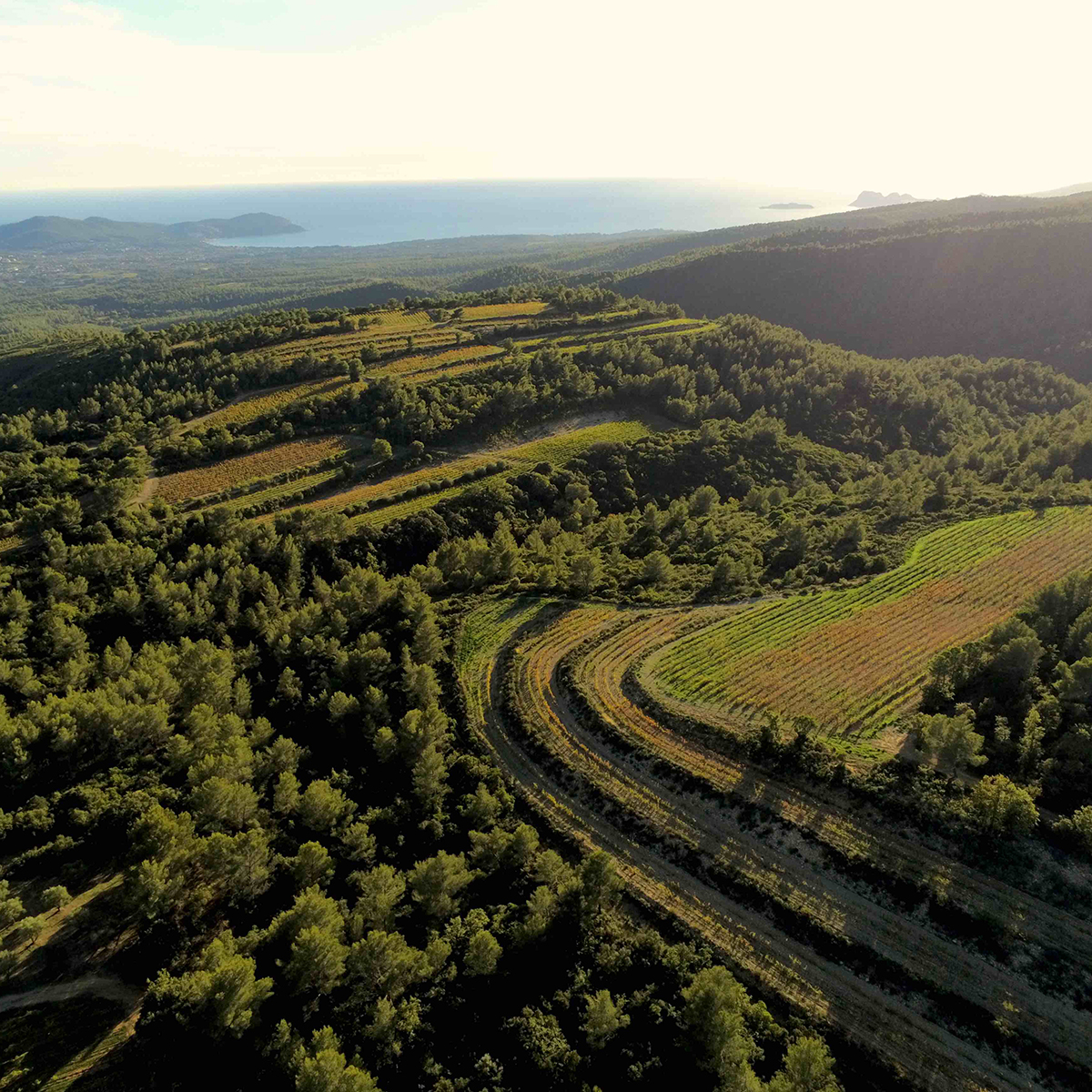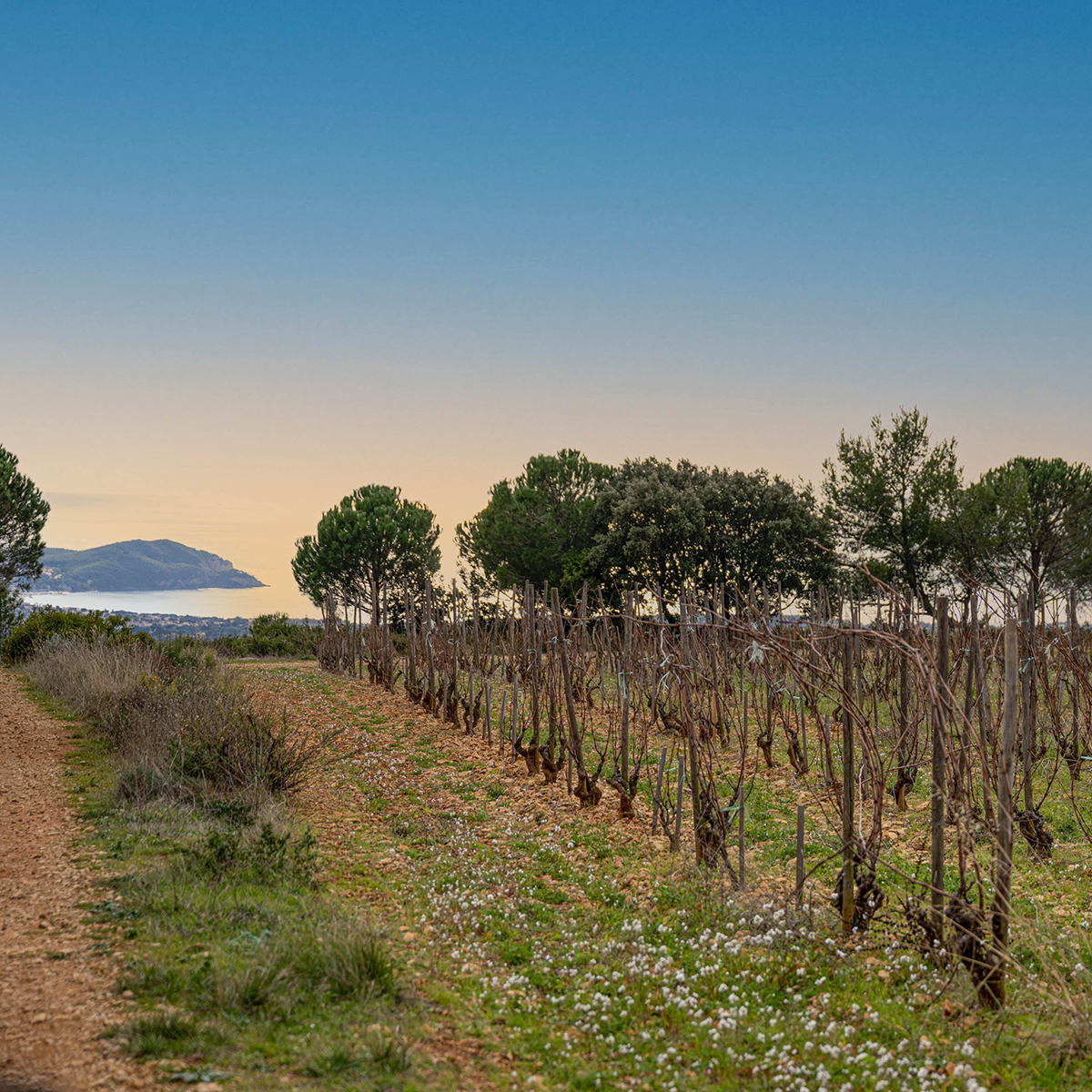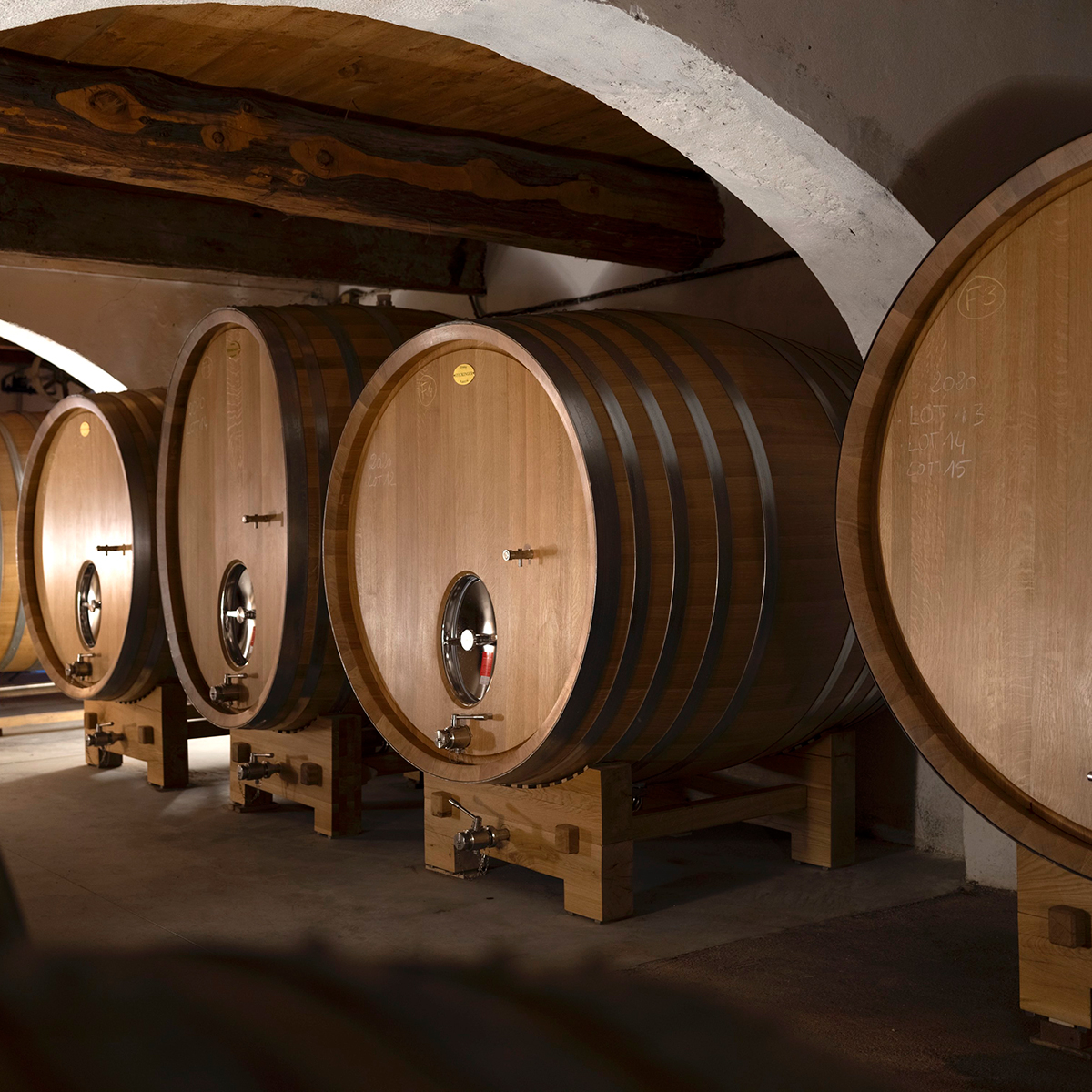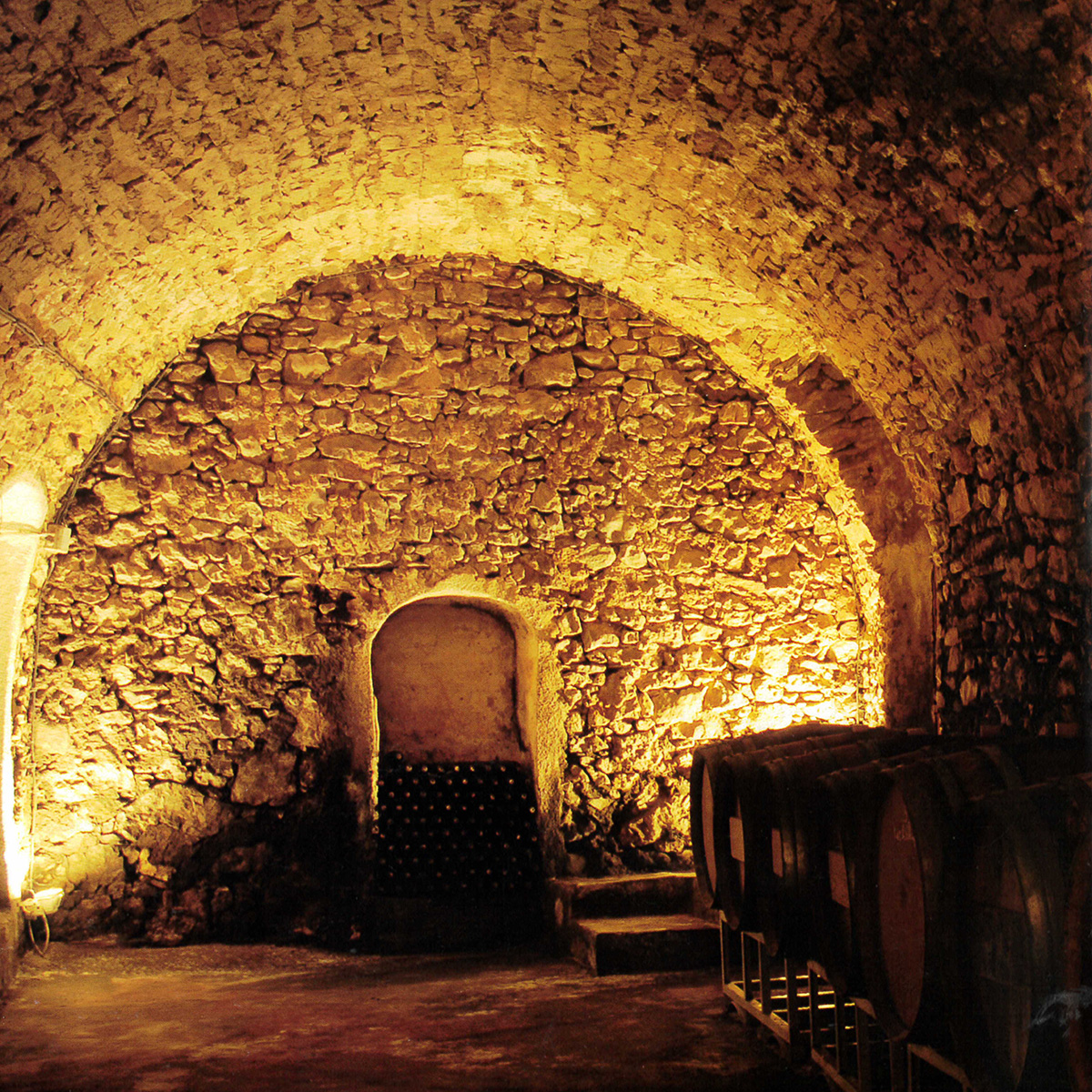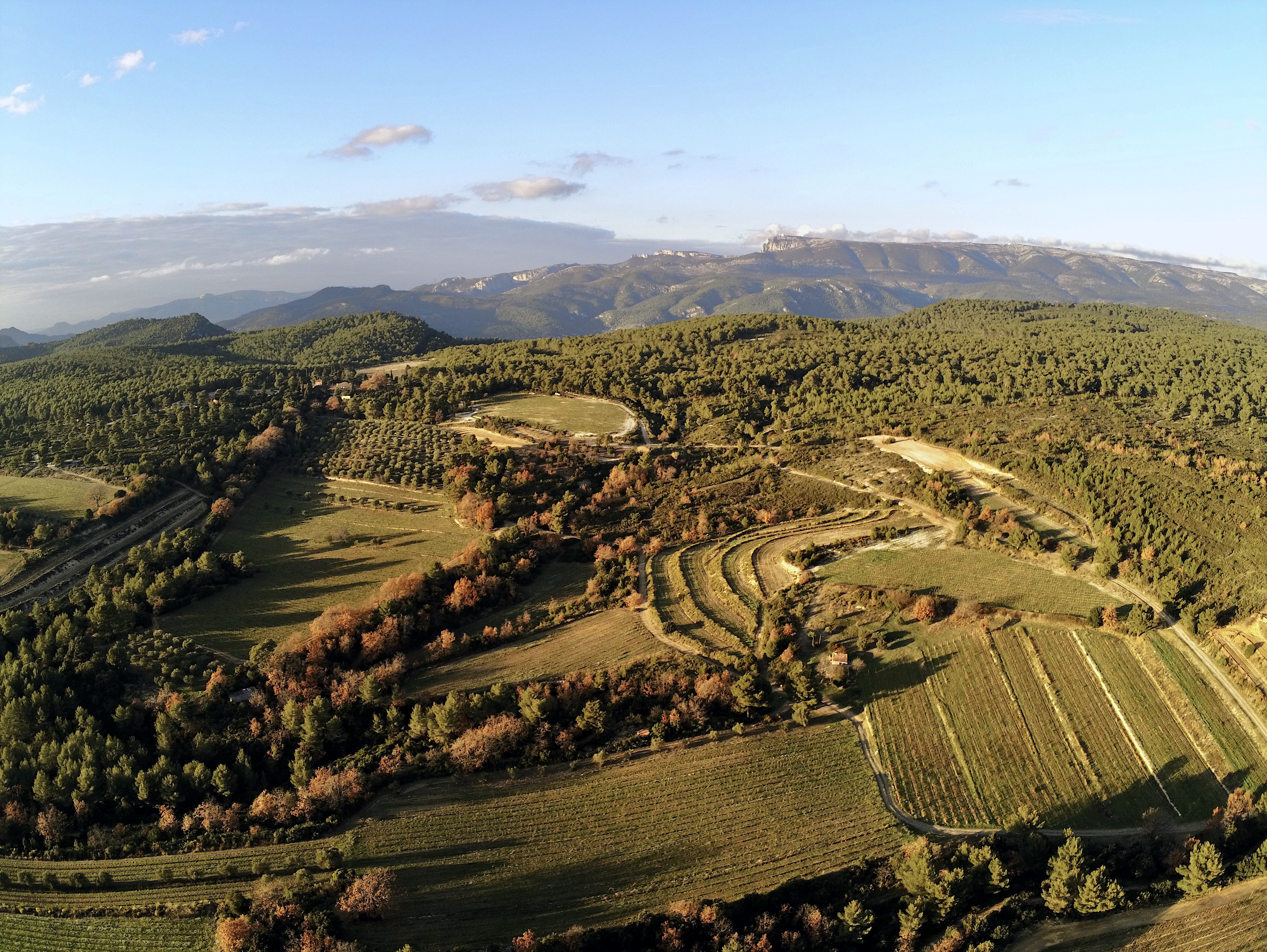
Domaine de la Bégude was purchased in 1996 by seventh-generation winemaker Guillaume Tari, who was raised at third-growth Château Giscours in Margaux (which his grandfather acquired in 1954). Once a stopover for travellers seeking shelter and sustenance – ‘beguda’ means ‘drink’ or ‘the place to drink’ in Provençal – this Bandol estate was abandoned and overgrown when Guillaume rediscovered it. He and his wife have since replanted Domaine de la Bégude’s old terraces and restored its buildings to their former glory. Today, the domaine encompasses 500 hectares of vines, of which thirty have been replanted, predominantly with Mourvèdre. Guillaume’s fascination with Mourvèdre’s ageing potential partly inspired his creation of the world’s largest collection of Mourvèdre clones, now totalling 116. Guillaume has recently sold the estate to the Rouleau family, owners of fifth-growth Chateau Dauzac in Margaux, who share Guillaume’s vision for the domaine and its wines.
Divided into eighty different parcels, Domaine de la Bégude’s vineyards are planted on a diverse ‘mosaic’ of clay and limestone soils, each ideally suited to the nuances of their various Mourvèdre clones. Planted at an average elevation of 410 meters, the domaine’s vineyards are the highest in the Bandol appellation. A combination of limestone subsoils, high elevation and sea breezes moderates the intense sunshine and brings freshness to the final wines. Guillaume implemented an old grafting technique to improve the vines’ drought resistance when replanting. This involved planting the rootstock and giving it two years to establish before the scion was grafted by hand. Guillaume’s wish to create an environment in harmony with its surroundings led him to introduce organic and biodynamic methods in 1996 and achieve organic certification in 2006.
Domaine de la Bégude continually aims to produce wines which honestly reflect their origins. Grapes are all harvested manually, sorted twice, destemmed and fermented with indigenous yeasts. The Bandol appellation requires red wines to be sourced from vines with a minimum of eight years of age, contain at least 50% Mourvèdre and undergo 18 months of oak ageing, whereas rosé wines must include a minimum of 20% Mourvèdre. The ‘Cadet’ rouge and rosé are an equal blend of Mourvèdre, Grenache and Cinsault sourced from the youngest vines at the estate, with an average age of 10 years. As a result, these wines are classified as IGP Méditerranée instead of Bandol AOC.
Both the ‘Cadet’ rosé and the domaine’s Bandol rosé undergo slow pressing and cold settling before fermentation in stainless steel. Their Bandol rosé is also aged on its fine lees to add further complexity and freshness, which balances the higher percentage of Mourvèdre. Their Bandol ‘Thyrsus’ is made from 100% Mourvèdre, bottled without sulphur. The grapes are fermented for 10 days in amphorae with regular, manual punch downs to aid phenolic extraction. Aged for six months in amphorae, the resulting wine displays layers of pure black fruit punctuated by notes of thyme and cinnamon and supported by firm tannins.
Their Bandol Rouge is a blend of 90% Mourvèdre and 10% Grenache, aged for 20 months in a combination of 600-litre demi-muids and 300 and 400-litre used oak foudres. Its structured palate is balanced by concentrated red and black fruit with lifted notes of violet and garrigue and a persistent finish.
All wines from this producer
Producer | Wine | Product Code | Features | Style | |
|---|---|---|---|---|---|
| Domaine de la Bégude | Cadet de la Bégude Rouge IGP | DB401 | R | ||
| Cadet de la Bégude Rosé IGP | DB402 | Ro | |||
| Bandol Rosé | DB403 | Ro | |||
| Bandol Rouge | DB404 | R | |||
| Thyrsus IGP | DB405 | R | Factsheet |
